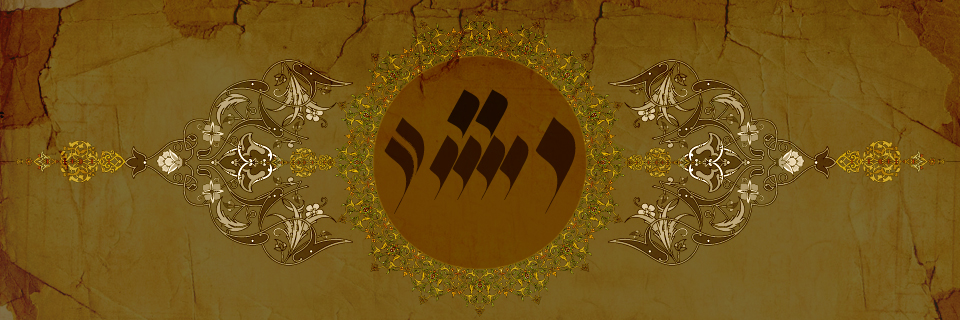A nomen patientis is an adjectival phrase indicating the feature as being the object of a nomen actionis.
a. Derivation of Nomina Patientis
In Persian, Nomina patientis are derived from transitive non-finite verb forms:
- By the adjectivization of perfect participles: /goftæ/ گفته, /boridæ/ بریده, /næhɒdæ/ نهاده
- From present participles:
- Occasionally by adjectivization: /pæsænd/ پسند
- With the suffix /-æ/: /æfʃoræ/ افشره, /tærɒʃæ/ تراشه
- Occasionally from verbal roots with the suffix /-tɒr/: /gereftɒr/ گرفتار
- Occasionally from past participles by adjectivization: /pæjvæst/ پیوست
- Occasionally from nominal participles:
- By adjectivization: /æfzun/ افزون, /borin/ برین
چون برید و داد او را یک برین
همچو شکّر خوردش و چون انگبین
Rumi (13th Century AD)
- With the suffix /-æ/: /nemunæ/ نمونه
- By adjectivization: /æfzun/ افزون, /borin/ برین
- In the Tajik idiom also by adjectivization of presumptive participles (see also the article of Firuza Amanova in مجلهء زبانشناسی, ۱۵th and 16th issue, page 7):
مکتوبِ دیروز نوشتگیِ /neveʃtægi/ من در بالایِ میزست.
In Persian, foreign language nomina patientis also belong to this group: /mottæhæm/ متّهم, /mæʃkuk/ مشکوک
b. Attribution of Nomina Patientis
(See 3•d•a•b. Attribution of Nomina Actionis and 4•۲•b. Attribution of Nomina Agentis.)
Nomina patientis can also be attributed by one or more sentence constituents. This process is subject to the following rules (in the presented order). A new nomen patientis is formed in every step before being attributed by the next step:
- The determinative composition of verb particles with nomina patientis which are derived from non-finite verb forms:
برگرفته /bær-gereftæ/
- The determinative composition of predicative complements with nomina patientis which are derived from non-finite verb forms:
بزرگکرده /bozorg-kærdæ/
- The determinative composition of one (only one) of the following sentence constituents, with nomina patientis which are derived from non-finite verb forms:
- The subject:
خودکرده /xod-kærdæ/
کارِ خود گر به کَرَم باز گذاری حافظ!
ای بسا عیش که با بختِ خداداده /xodɒ-dɒdæ/ کنی
Hafez (14th Century AD)
- The instrumental adverbial without adposition (as a noun phrase):
دستنشانده /dæst-neʃɒndæ/
دوش رفتم به درِ میکده خوابآلوده /xɒb-ɒludæ/
خرقه تردامن و سجّاده شرابآلوده /ʃærɒb-ɒludæ/
Hafez (14th Century AD)
- Direct objects which are appellative-indefinite noun phrases (= no adpositional phrases with the postposition /rɒ/):
استفادهکرده /estefɒdæ-kærdæ/, آبداده /ɒb-dɒdæ/
- The subject:
- Adverbials which are noun phrases (= no adpositional phrases) are attached to nomina patientis with a possessive genitive (with the pattern [AP[APnomen patientis] [Conenclitical conjunction /-e/] [NPadverbial]]):
گفتهیِ دیروز [AP[AP/goftæ/] [Con/-je/] [NP/di-ruz/]]
- Subjects are attached to nomina patientis by means of possessive genitive (with the pattern [AP[APnomen patientis] [Conenclitical conjunction /-e/] [NPsubject]]):
مخمورِ جامِ عشق [AP[AP/mæxmur/] [Con/-e/] [NP/ʤɒm-e eʃɣ/]] م، ساقی بده شرابی!
پر کن قدح! که بی مِی مجلس ندارد آبی
Hafez (14th Century AD)
کشتهیِ عشقِ تو [AP[AP/koʃtæ/] [Con/-je/] [NP/eʃɣ-e to/]]
- All objects (aside from the direct object) and all adverbials can be positioned as attributes in the front or after the nomen patientis. The nomen patientis can have several such attributes:
بر هامون نهاده [AP[PP/bær hɒmun/] [AP/næhɒdæ/]]
نهاده بر هامون [AP[AP/næhɒdæ/] [PP/bær hɒmun/]]
برگرفته از دیوانِ شهریار با موافقتِ ناشر [AP[AP/bær-gereftæ/] [PP/æz divɒn-e ʃæhr-jɒr/] [PP/bɒ movɒfeɣæt-e nɒʃer/]]
با موافقتِ ناشر از دیوانِ شهریار برگرفته [AP[PP/bɒ movɒfeɣæt-e nɒʃer/] [PP/æz divɒn-e ʃæhr-jɒr/] [AP/bær-gereftæ/]]
In Persian, it is notable that perfect participles can be replaced with the following participles in the determinative composition:
- The past participle:
آبرفت /ɒb-roft/، زراندود /zær-ændud/
آتشِ خشمِ تو برد آبِ منِ خاکآلود /xɒk-ɒlud/
بعد از این باد به کویِ تو رساند خبرم
Hafez (14th Century AD)
همان روشنک را که دختِ منست
بدین نازکی دستپختِ /dæst-poxt/ منست
Nezami Gandjavi (12th and 13th Century AD)
Some of these nomina patientis are commonly used with descriptive suffixes:
دمپختک /dæm-poxt/ + /-æk/ = /dæm-poxtæk/
- The present participle:
دخترپز /doxtær-pæz/، سگخور /sæg-xor/، آبپز /ɒb-pæz/، زجرکش /zæʤr-koʃ/، دستچین /dæst-ʧin/، دستکش /dæst-kæʃ/
همه را دید دستپرورِ /dæst-pærvær/ ناز
دست از آیینِ جنگ داشته باز
Nezami Gandjavi (12th and 13th Century AD)
ای نظامی پناهپرورِ /pænɒh-pærvær/ تو!
به درِ کس مرانش از درِ تو!
Nezami Gandjavi (12th and 13th Century AD)
It is an actual exchange of participles, because these past and present participles generate no Persian nomina patientis without determinative composition.
Such constellations are seldom used with other sentence constituents:
- Locative adverbial: /zir-nevis/ زیرنویس, /sær-neveʃt/ سرنوشت
- Modal adverbial: /ʧerk-nevis/ چرکنویس

